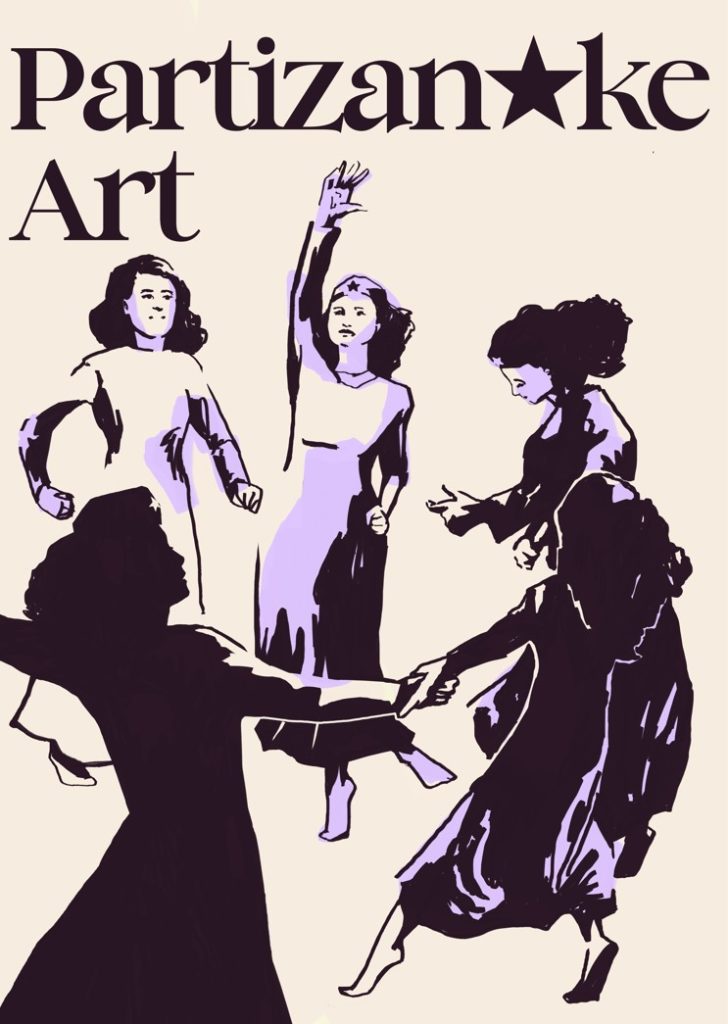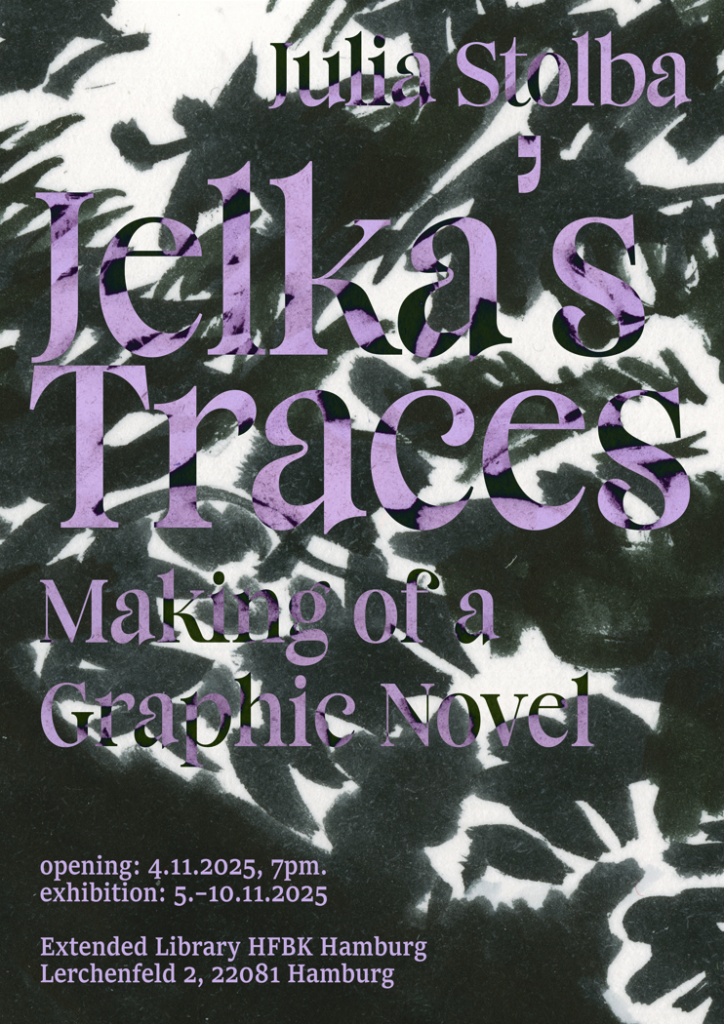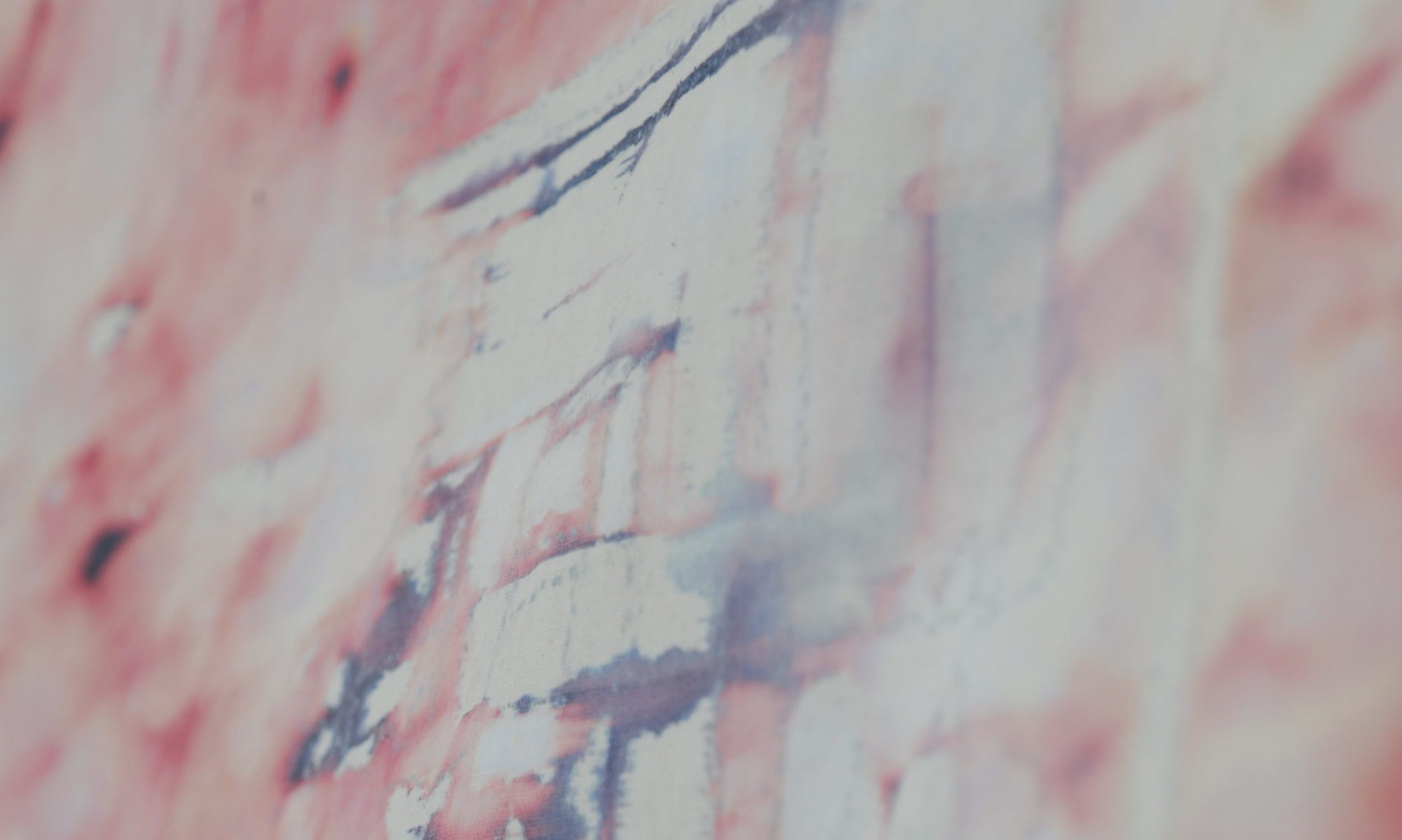
Illustration: Julia Stolba
Die Kunst des weiblichen Widerstands in Jugoslawien und Kärnten | Umetnost ženskega odpora v Jugoslaviji in na Koroškem
Ein Phänomen, das seinesgleichen sucht, ein Erbe, das wiederentdeckt gehört: Kunst als Widerstand. Das internationale Kollektiv Partizan★ke Art bringt auf Einladung des Društvo/Verein Peršman erstmals Partisaninnenkunst aus Jugoslawien und Kärnten in den Container 25 in Hattendorf bei Wolfsberg.
Ausstellungsdauer: 13. Dez 2025 bis 28. Feb 2026
Geöffnet freitags und samstags von 14 bis 18 Uhr oder nach Voranmeldung unter 0650/9241525
Eintritt frei.
Eröffnung:
SA, 13. Dezember 2025
Beginn: 19 Uhr
Eröffnung: Nikolaj Orasche (Obmann des Verbandes der Partisan:innen)
Zur Ausstellung: Elena Messner und Julia Stolba (Kurator:innen)
Musik: Nora Heller und Lena Stückler
Anschließend folgt eine Buchpräsentation von „Women and Partisan Art – Ästhetik und Praktiken des Widerstands in Jugoslawien und Kärnten“ (transcript Verlag, 2025).
Mit Elena Messner, Daniel Gönitzer, Markus Gönitzer und Julia Stolba

Warm invitation to the exhibition opening:
Jelka’s Traces. Making of a Graphic Novel
by Julia Stolba
Opening: 4 November 2025, 7 p.m.
Talk with Michaela Melián und Nora Sternfeld
Exhibition: 5–10 November 2025, Extended Library, HFBK Hamburg
Lerchenfeld 2, 22081 Hamburg
“The experience she has acquired over the course of a lifetime should belong to everyone who knows what to do with it. […] Everyone who is young in this world could be her grandchildren. And she has only one wish for this generation – that they are spared the experiences that she and her comrades have paid for with blood. And just one question: if it does come to that, who will be prepared?”[1]
Who was Helena Kuhar-Jelka, who hid leaflets in her hat during the Nazi dictatorship, smuggled food and medicine into the forests, developed codes to warn her comrades, and eventually joined the partisans in the forest herself? The Carinthian-Slovenian partisan was born in 1906 in Leppen/Lepena, in the trenches of the Karawanken mountains. After the “Anschluss” of Austria into Nazi Germany 1938, she supported the resistance as a civilian until she was betrayed in 1943 and fled to the forest. Jelka survived imprisonment by the Gestapo and remained politically active throughout her life after liberation. She fought against discrimination against Carinthian Slovenes and for women’s rights.
The graphic novel ‘Jelka’s Traces’, developed jointly by Markus Gönitzer and Julia Stolba, traces the stages of her life. In addition, the narrative focuses on transgenerational dimensions: conversations and images from Breda Županc, Helena Kuhar’s youngest daughter, Zdravko Haderlap, her grandnephew, and other companions, as well as the archive of Brigitta and Thomas Busch. What can we learn from resistant women like Jelka today?
The exhibition Jelka’s Traces. Making of a Graphic Novel is the artistic part of Julia Stolba’s doctoral thesis ‘The Dissociative Archive. Of Partisans, Ghosts and Affects in the Peršmanhof Museum’ at the HFBK Hamburg. It shows the process of creating the graphic novel and the archival work within the project.
[1] Brigitte Windhab, Thomas Busch, Einführung, in: dies. (Hg:innen) Jelka. Aus dem Leben einer Kärntner Partisanin. Herausgegeben von Thomas Busch und Brigitte Windhab nach Tonbandaufzeichnungen von Helena Kuchar. Klagenfurt/Celovec 1984, S.8-9.

Illustration: Julia Stolba
Partizan★ke Art. Die Kunst des weiblichen Widerstands in Jugoslawien und Kärnten Umetnost ženskega odpora v Jugoslaviji in na Koroškem
Eröffnung: 02.09., 18 Uhr kärnten.museum
Ausstellung: 03.10.–16.11.2025
Ein Phänomen, das seinesgleichen sucht, ein Erbe, das wiederentdeckt gehört: Kunst als Widerstand.
Auf Einladung des Društvo/Verein Peršman bringt das internationale Kollektiv Partizan★ke Art erstmals Partisaninnenkunst aus Jugoslawien und Kärnten ins Museum. Die kulturell tätigen Akteurinnen des Widerstands waren zum einen Teil der Avantgarde, zum anderen Bäuerinnen, die sich in traditionellen Formen der Volkskunst ausdrückten.
Die Ausstellung vereint über 30 internationale Beiträge aus Literatur, Bildender Kunst, Film, Fotografie, Textil, Grafik, Theater, Tanz, Musik und Denkmalarchitektur. Sie macht den bis heute wenig bekannten weiblichen Widerstand gegen Nazismus und Faschismus sichtbar – künstlerisch und wissenschaftlich.
Sei dabei, wenn wir diese beeindruckende Sonderschau eröffnen!
Fenomen brez primere, zapuščina, vredna, da jo ponovno odkrijemo: umetnost kot odpor.
Na povabilo Društva Peršman bo mednarodni kolektiv Partizan★ke Art prvič predstavil umetnost partizank iz Jugoslavije in avstrijske Koroške. Kulturno dejavne udeleženke odpora so bile na eni strani del avantgarde, na drugi pa ženske s podeželja, ki so se izražale v tradicionalnih oblikah umetnosti.
Razstava združuje več kot 30 mednarodnih prispevkov s področja literature, likovne umetnosti, filma, fotografije, tekstila, grafike, gledališča, plesa, glasbe in spomeniške arhitekture. Z umetniškimi in akademskimi sredstvi predstavlja vse do danes redko viden ženski odpor proti nacizmu in fašizmu.
Pridružite se nam na otvoritvi te izjemne razstave!
Kurator:innen | Kuracija
Elena Messner, Brigita Malenica, Julia Stolba, Sabina Ferhadbegović, Goran Lazičić
Hosted by | Organizator
Društvo/Verein Peršman & Muzej/Museum Peršman (Markus Gönitzer)
Illustration: Julia Stolba
Videoproduktion | Video produkcija: Julia Stolba, Elena Messner
Wissenschaftliche Beiträge | Akademiki in znanstveniki: Ana Adamović, Stanislava Barać, Đurija Borovnjak, Ana Buka, Sabina Ferhadbegović, Lea Furbach, Markus Gönitzer, Daniel Gönitzer, Jakob Holzer, Gal Kirn, Goran Lazičić, Andreas Leben, Brigita Malenica, Tijana Matijević, Elena Messner, Aleksandra Momčilović, Jelena Petrović, Ana Rajković Pejić, Julia Stolba, Nora Sternfeld, Ana Hoffner ex-Prvulović*, Katarzyna Taczyńska, Zlatan Tunjić, Ljubinka Škodrić, Dubravka Zima, Maja Krtalić
Bannerdesign | grafika banera: Metaklinika
Übersetzung | prevod: Amalija Maček
Dank | Hvala: Muzej II zasjedanja AVNOJ-a (Jajce), Arhiv Jugoslavije, Muzej Jugoslavije, Muzej novejše i sodobne zgodovine Slovenije, ZNACI online archive, Institut für Slawistik der Alpen-Adria Universität Klagenfurt/Celovec, Unwanted images, WerkStattmuseum/delavnicaMuzej, ZKP – Zveza koroških partizanov in prijateljev protifašističnega odpora, Institut für Slawistik der Universität Graz
Gefördert von | Podpirajo: FWF, Schroubek Fonds Östliches Europa, Erinnerungsjahr 2025/Land Kärnten, kärnten.museum, Društvo/Verein Peršman & Muzej/Museum Peršman
Podpirajo: FWF, Schroubek Fonds Östliches Europa, Erinnerungsjahr 2025/Land Kärnten, kärnten.museum, Društvo/Verein Peršman & Muzej/Museum Peršman

